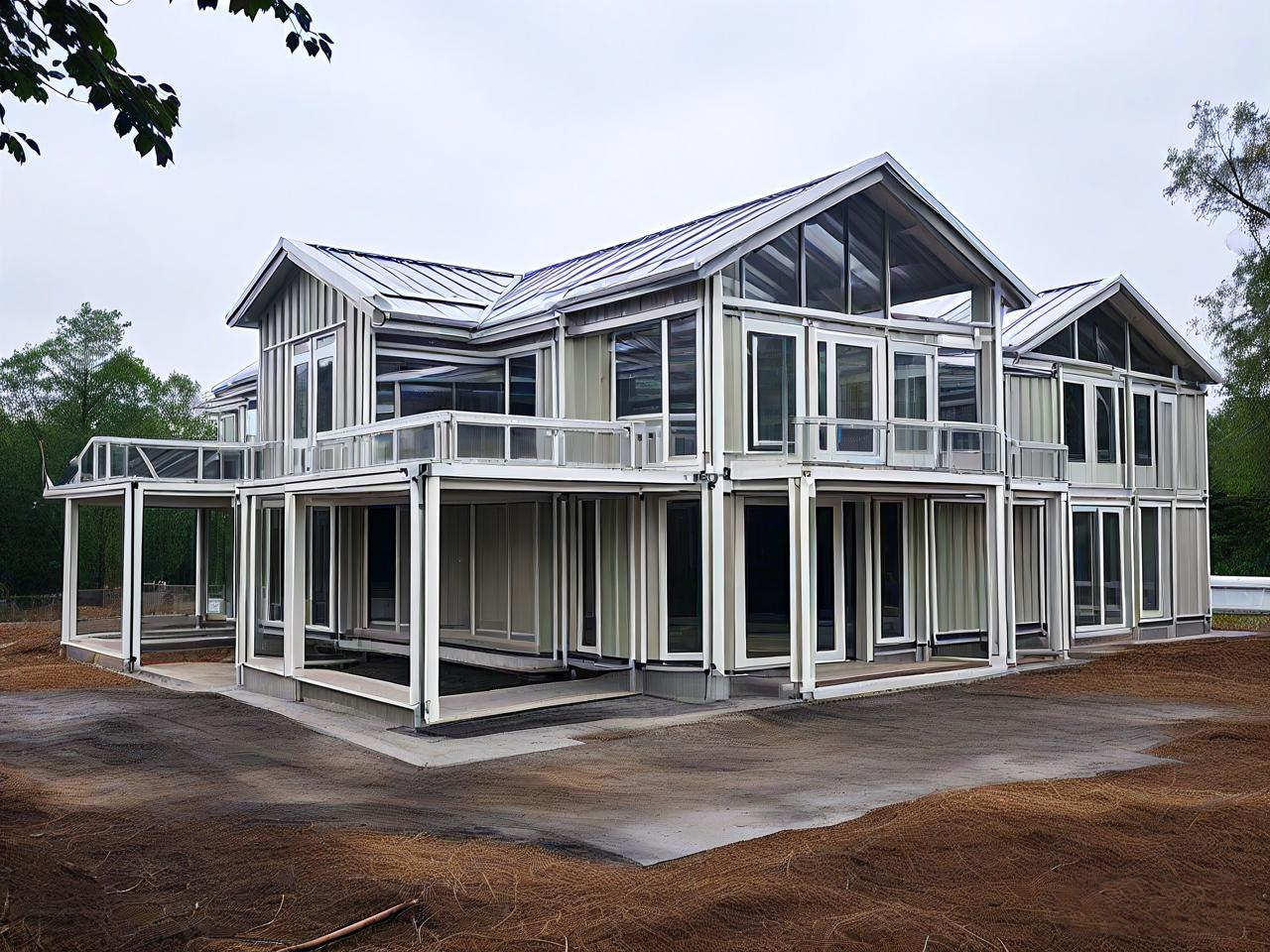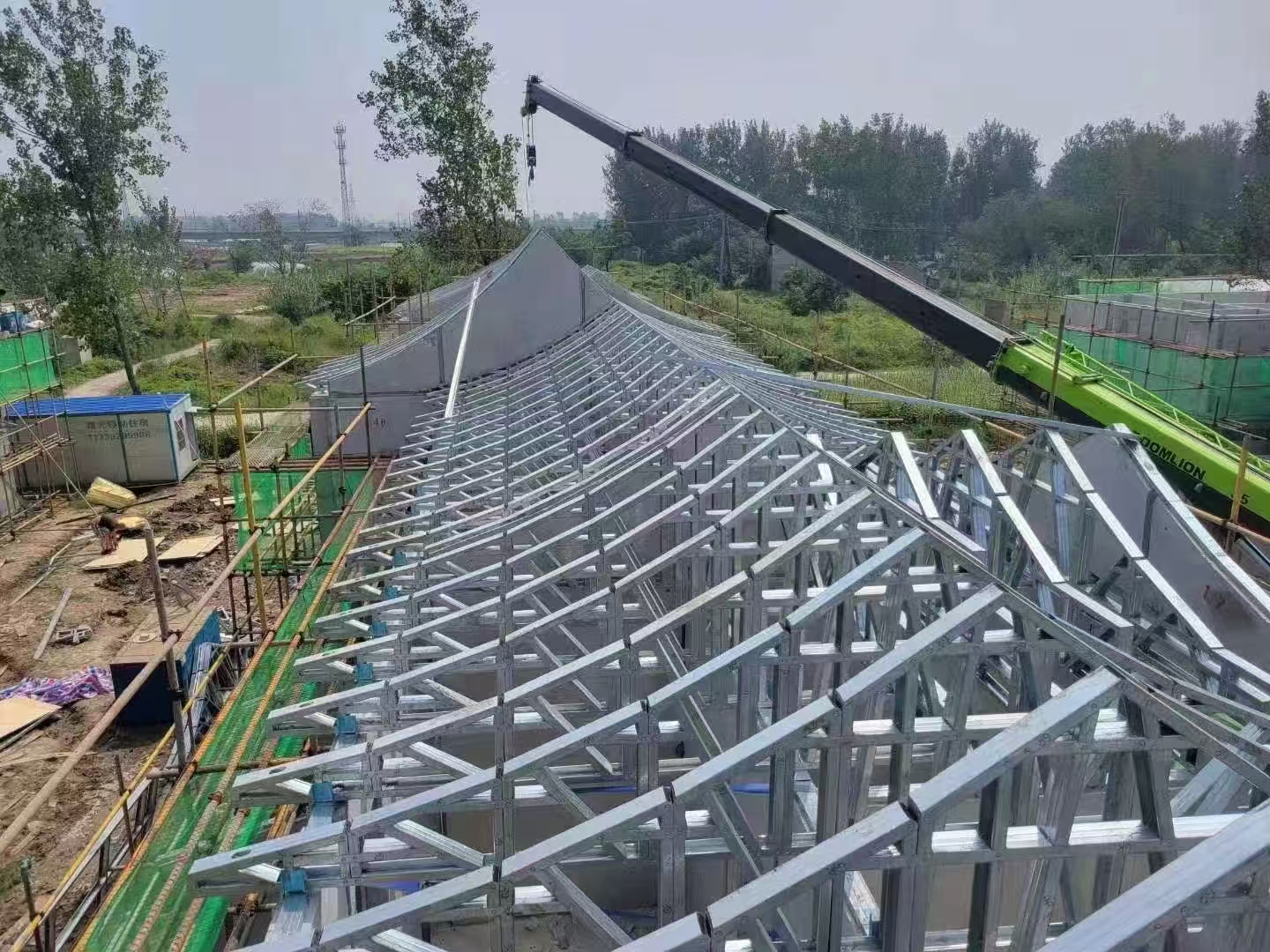As a typical representative of industrialized construction, the compliance of material standards for steel structure villas directly affects the safety and market recognition of the building. Based on the latest international standard trends in 2025, this article conducts professional analysis from three dimensions: core material system, international benchmarking differences, and certification implementation path.

I. International standard mapping of core material system
1. Structural steel: strength and process dual track benchmarking
• Material requirements
The Chinese national standard GB/T 700 (carbon structural steel) and ISO 630-1:2024 (international standard for structural steel) have achieved full parameter docking, with Q235 and Q345 steel corresponding to international S235JR and S355J2 grades, respectively. Projects in extremely cold regions of Northern Europe must additionally meet the requirement of -40 ℃ impact energy ≥ 27J for EN 10137 (low-temperature toughness steel).
• Galvanizing process
The American ASTM A653 (hot-dip galvanized steel strip) requires a coating thickness of ≥ Z275 (275g/㎡), which is completely consistent with the Chinese GB/T 2518 DX51D+Z standard. Coastal high corrosion areas require the addition of ISO 9223 C5 anti-corrosion certification, using Galfan alloy coating (95% zinc+5% aluminum).
2. Connection System: Global Collaboration of Mechanical Properties
• Fastener standards
High strength bolts comply with ISO 898-1:2025 grade 8.8 standard (tensile strength ≥ 800MPa) and achieve equivalent mutual recognition with the national standard GB/T 3098.1. The key seismic nodes must pass the cyclic loading test of AISC 341-22 (American Steel Structure Seismic Standard) and withstand ± 5% inter story displacement angle without failure.
• Welding process
AWS D1.1 (American Welding Code) and GB 50661 are unified in weld seam testing: ultrasonic testing (UT) has a detection accuracy of up to Φ 1mm for defect identification, and radiographic testing (RT) meets the B-level sensitivity of ISO 10675-1:2023.
3. Enclosure materials: Advanced requirements for performance parameters
•OSB board
The European PRG-320 standard requires a static flexural strength of ≥ 35MPa (GB/T 4897 is ≥ 22MPa), and export projects require the use of oriented strand board surface coated with a 0.5mm basalt fiber reinforcement layer.
• Thermal insulation materials
The EU CPR 305/2011 fire protection standard requires rock wool products to have a combustion performance of A1 level (equivalent to GB 8624-2012), and also to pass the EN 13162:2024 wet heat cycle test (strength loss ≤ 10% in 80 ℃/95% RH environment).

II. Differences in International Standards and Response Strategies
1. Regional technological divide
North American system: ASTM E119 fire test requires walls to maintain integrity for 2 hours in a 1000 ℃ fire field, which is more stringent than the 1.5 hour requirement of the national standard GB/T 9978.1. A composite structure of calcium silicate board and ceramic fiber cotton is required.
European system: EN 1993-1-3 (Design of Cold Formed Thin Wall Steel Structures) requires the thickness tolerance of structural steel to be controlled within ± 0.1mm. If it exceeds the ± 0.15mm limit of the national standard GB/T 2518, laser cutting technology should be used for compensation.
2. Difficulties in certification connection
LEED v4.1 requires a building material recycling rate of ≥ 75%, while China's current GB/T 50378-2023 only requires a recycling rate of ≥ 30%, requiring the establishment of a closed-loop scrap steel recycling system.
Passivhaus certification stipulates that the air tightness n50 ≤ 0.6 times/h, and EPDM (ethylene propylene diene monomer) rubber sealing tape (compression permanent deformation rate ≤ 20%) must be used at the joint of the light steel keel.
III. Implementation Path of Global Certification
1. Material supply chain reengineering
Establish a global procurement platform that complies with IEC 62262:2025, achieving multi country certification coverage of CE, UL, JIS for main materials such as steel and bolts, for example:
Baosteel QStE500TM has passed T Ü V Rheinland certification and entered the German market
A company in Zhejiang has obtained the ICC-ES AC478 certificate for cold-formed steel and has been granted entry into California, USA
2. Digital compliance management
Applying blockchain technology to track material carbon footprint and meet the EU CBAM carbon border tax requirements (to be implemented from 2026), for example:
Each ton of lightweight steel components is embedded with NFC chips, and real-time production energy consumption data is uploaded to the ISO 14067 platform
Automatically generate EN 15804 Environmental Declaration (EPD) based on BIM model
3. Localization adaptation plan
High temperature zone in the Middle East: using aluminum magnesium zinc coated steel plate (AZM150, salt spray resistance ≥ 3000h)+phase change energy storage gypsum board (enthalpy value ≥ 120kJ/kg)
Nordic Arctic region: Developing double-layer light steel composite walls (outer layer of S420 steel+inner layer of weather resistant steel), certified for -50 ℃ toughness according to EN 1993-1-10

Conclusion and Suggestions (Industry Practice in 2025)
At present, the main material standards for steel structure villas in China have achieved over 80% international equivalence, but breakthroughs are still needed in areas such as extreme climate adaptation and full lifecycle carbon management. Suggest taking the following actions:
1. Establish an ASTM-ISO-GB joint laboratory to promote the standardization of fatigue performance standards for cold-formed steel
2. Develop nano coating technology to increase the corrosion resistance of galvanized layers from 25 years to 40 years (benchmarking against Japanese JIS H 8641)
3. Participated in the ISO/TC167/SC1 committee and led the revision of international standards for cold-formed steel structures
Through the three-dimensional upgrade of material standards, process technology, and certification system, Chinese steel structure villas are expected to achieve barrier free access to over 95% of the global market by 2027, becoming a core force in international green building.